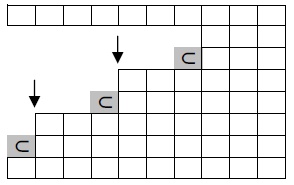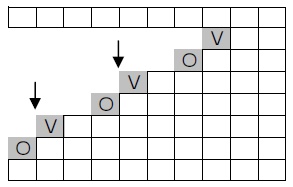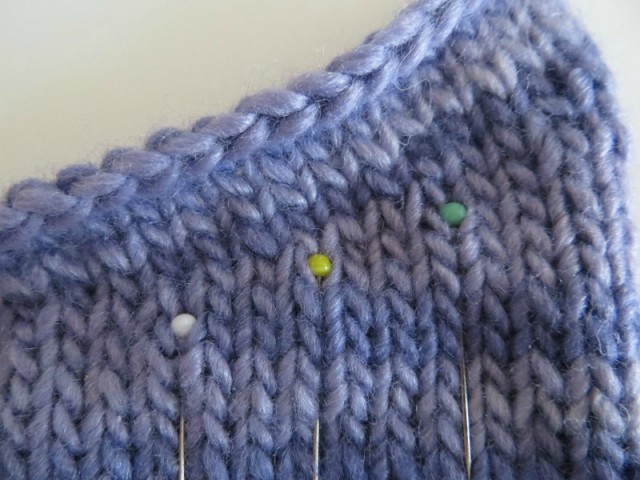You’ve perhaps heard of “the Japanese Short Rows method” which only uses a slipped st at each turn. This technique only requires split markers (or safety pins, paper clips…) you put on your working yarn to mark the connecting loop. And when you get back to the marked stitches, you will lift the loop to resolve the gaps.
Another Japanese method – yes, there are TWO methods! – uses yarn over and slipped st. It’s the method Japanese knitters learn first since it’s considered easier than “the Japanese Short Rows method”. In brief, you make a YO at each turn and slip the first st of next row.
The thing those two methods have in common is “slipped st” at turns, which means that you have one less row than W&T method at the turning points.
Here’s the difference illustrated in chart:
W&T |
Japanese methods |
The arrows show the turning points, while the grey cells indicate what you do (wraps in W&T, yos and slipped sts in Japanese methods). They will disappear from RS once you will have resolved short rows and only white cells remain.
And what we can see is that the “slope” of white cells is smoother with Japanese methods.
With a real yarn, you get this result:

I marked with pins the sts just below short rows. From left to right, Japanese method with yo (method 2), “the” Japanese method (method 1) and W&T. And the row where short rows’ gaps are resolved is in darker blue. We can see that between pinned row and darker row, there are 2 rows with W&T and only 1 row with Japanese methods.
Then, Japanese methods are better than W&T?
I’d say Yes and No: “Yes” because their result is neater as I’ve demonstrated so far; but “No” because they are not as “handy” as W&T. As you know, with the method 1, you need to have split markers or any other similar tool in your hands whereas you just need your needles and working yarn with W&T. As for the method 2, when resolving short rows, you simply knit the YO and the next st together on RS, but on WS, you have to reverse the YOs and the next stitch before purling them together – yes, I’m slacker.
Then, what happens when we mix W&T and Japanese methods? That will be the subject of the next post!
Do you find this post helpful? Please consider supporting me if you want to read more helpful posts. Thank you 💜
![]()


4 thoughts on “Japanese short rows?”